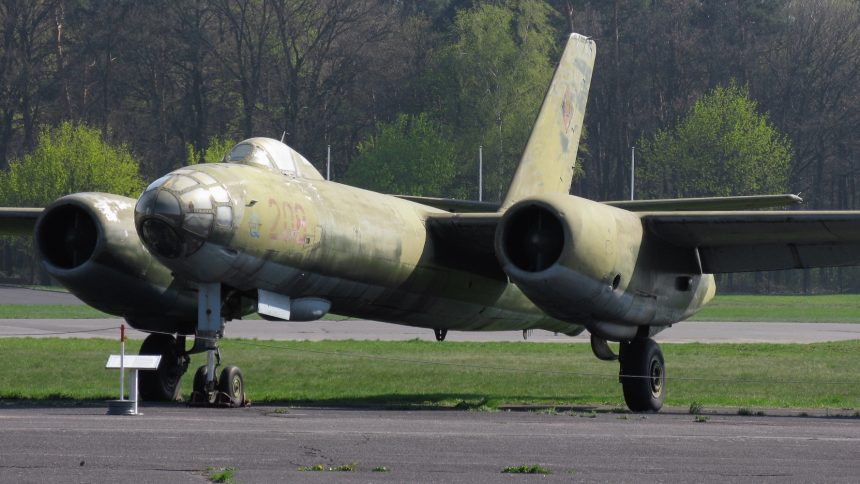Making a flyover appearance at the 1950 Soviet May Day parade, the Il-28 went on to become one of the most prolific, reliable, and adaptable bombers in the arsenals of the Soviet Union, the Warsaw Pact, and client states.
A New Bomber
The result of a requirement to replace the Tupolev Tu-2 piston engine bomber, the design on the Ilyushin Il-28 began in 1947, with the first flight of a pre-production model on Aug. 8, 1948. Meeting the requirements of an aircraft with a speed of 500 mph and a payload of over 6,000 lb, the Il-28 became the Soviet Union and Warsaw Pact’s mainstay tactical bomber during the early years of the Cold War.
On May 1st, 1950, by orders of Joseph Stalin, twenty-five Ilyushin Il-28 aircraft flew over the May Day parade occurring at Red Square in Moscow. The West was now aware of a jet powered tactical nuclear bomber threat, after much speculation and confusion surrounding new Soviet aircraft types that were in development or production. The new Ilyushin bomber would be known to NATO (North Atlantic Treaty Organization) as the “Beagle.”
Flying at a maximum speed of 560 mph with a bombload of 6,600 lb, a combat radius of over 700 miles, and a service ceiling of over 40,000 ft, Stalin’s new bomber exceeded the initial requirements. The Il-28 was capable of carrying tactical nuclear weapons, conventional bombs, mines, and a torpedo version was also built. The aircraft also carried four 23 mm cannon, two in the nose controlled by the pilot with 100 rounds each, and two operated by a gunner in a tail turret, with 250 rounds each.
Construction of the aircraft consisted of assembling the airframe in two separate halves, then bolting them together in an effort to save type and costs. Two engines, RD-45’s or later VK-1’s (Soviet copies of the British Rolls-Royce Nene), hung in large nacelles under each wing. The main landing gear retracted into the engine nacelles. A crew of three, a pilot, navigator/bombardier, and tail gunner/radio operator, all had separate pressurized compartments, the gunner/radio operator being completely physically isolated from the other crew members in a compartment very similar the tail gun compartment of an American B-29, constructed of magnesium to save weight.
The pilot sat under a sideways opening bubble canopy atop the aircraft, with the navigator in the glazed nose section of the aircraft. Both pilot and navigator had ejection seats, the gunner relying on an escape hatch in an emergency. A copy of the American Norden bombsight, the OPB-5S, was mounted in the navigator/bombardier compartment. Mapping radar was installed just ahead of the weapons bay. The Il-28 was of straight wing design with the trailing edges tapered. The tail surfaces were swept however. Eighty-eight gallon wingtip fuel tanks were later added as standard, extending range.
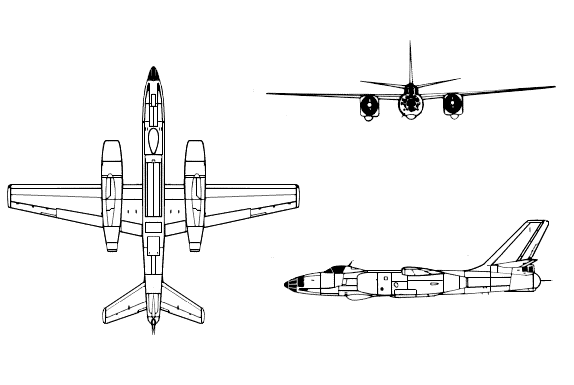
Many Variants
In addition to the standard bomber version, the Il-28 found its way into many other roles, including training (Il-28U, code named “Mascot” by NATO), naval torpedo bomber carrying RAT-52 torpedoes in an enlarged bomb bay (Il-28T), electronic warfare (Il-28REB), photo reconnaissance (Il-28R), anti-submarine (Il-28PL), ground attack (Il-28Sh), target drone tug (Il-28M), a dedicated nuclear bomber version carrying the 30 kiloton RDS-4 nuclear bomb in a heated bomb bay(Il-28N), and even a civilian trainer/cargo version (Il-28P/Il-20). The Il-28ZA was atmospheric sampling version and a proposed swept-wing version, the IL-28S, was never produced. There was also the Il-28RTR ELINT (Electronic Intelligence) version.
China received five-hundred Il-28s from the Soviets, Harbin Aircraft then began building them, designated it the H-5. The Chinese construction was of conventional methods instead of the split airframe bolt-together style of the Soviets. China also built several variants, including the ECM (Electronic Countermeasures) HD-5, the HZ-5 which was a reconnaissance version that carried underwing tanks, and a training version similar to the Soviet Il-28U, the HJ-5. The HJ-5 and its Soviet counterpart had the glazed nose section removed and a conventional windshield in place around a second cockpit for the instructor pilot, with the pilot in training sitting in the normal cockpit. A total of over 2,000 of all types were produced by China, including several export versions.
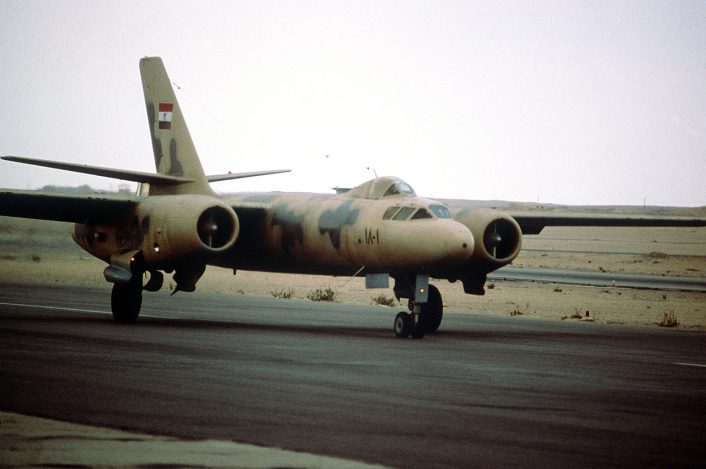
Conflicts and Cold War
Much of the operational history of the Ilyushin Il-28 occurred behind the Iron Curtains of the Soviet Union and Communist China; however there are a few documented events involving the bomber. The aircraft not only found service in most Soviet satellite states, it was in service in the Middle East, Africa, South East Asia, and even briefly North America.
Having all-weather capabilities and able to de-ice surfaces of wings and tail with hot air bled from the jet engines, it was the only aircraft in Soviet inventory able to fly over Moscow in adverse weather in March 1953 to honor Stalin’s death.
During the Soviet invasion of Hungary in 1956, it is reported the Hungarians shot down a Soviet photo reconnaissance Il-28R on Nov. 8. Hungary had used the type as well in the uprising, bombing Soviet troops at the Tisza River.
China sent several Il-28s to Manchuria near Korea mainly as deterrence during the Korean War, but they did not see action. There are reports of the aircraft being used against Taiwan by Communist China during the on and off fight for Quemoy and Matsu Islands in the 1950’s. China also used the type during an uprising in Tibet in 1959. A Chinese aircrew defected to Taiwan in an Il-28 on Nov. 11, 1965, giving the West an up close look at aircraft number 0195. A second Chinese Il-28 would defect Aug. 25, 1985, crash-landing in South Korea.
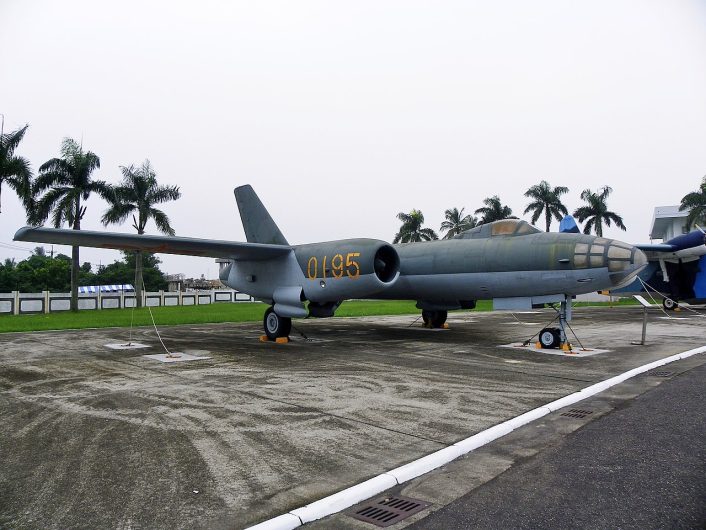
In 1962, the Soviet Union began delivering not only ballistic missiles to Cuba, but also 42 Il-28 bombers were off-loaded disassembled in crates, placing a tactical nuclear capable bomber force ninety miles from the United States. A high altitude U-2 reconnaissance flight on Oct. 15, 1962, photographed the crated aircraft fuselages lined up at San Julian airfield with the wings and engines nearby. Eventually with the resolution of the situation to become known as the Cuban Missile Crisis, the aircraft were re-crated and loaded back onto ships.
Egypt operated a large contingent of Il-28s, with several purchased from Czechoslovakia in 1955. The Czech firm Avia had been building and widely exporting the aircraft, designating it the B-228 for the bomber and the CB-288 for the training version. Israel was unhappy about having a large fleet of tactical bombers in the hands of an unfriendly neighbor, and during the Suez crisis in 1956, Egyptian Il-28s bombed Israeli airfields. The British and the French responded, destroying several on the ground after which the surviving aircraft were flown out of country. It is thought twenty-four of the original thirty-nine were destroyed, with several others damaged.
By 1960 the Egyptians had added more Il-28s to the EAF (Egyptian Air Force), now having sixty of the bombers. In the 1967 Six Day War, Israel destroyed twelve Il-28s on the ground the first day, and twenty-nine were lost all together in the conflict. Two were shot down in air-to-air combat with the rest destroyed on the ground. Syria had a small force of Il-28s during the war, and four were destroyed by Israel on the ground. Hostile actions continued even after the war, and Egypt continued flying Il-28R reconnaissance missions over Israel, resulting in two of them being shot down on Apr. 25, 1970.
Turkish fighters shot down two Il-28s on August 16, 1962, after the Iraqi bombers crossed the Turkish border while attacking Kurdish rebels. Kurdish rebels also claimed to have downed an Iraqi Il-28 in 1974.
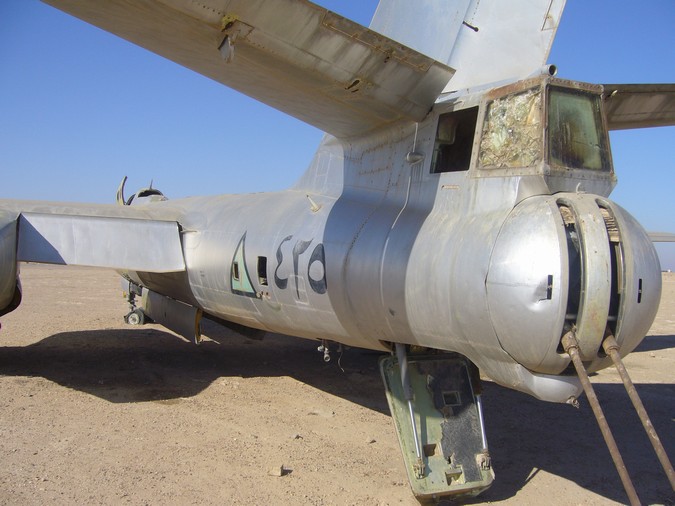
Il-28s were also used in chemical weapon and napalm attacks by the Egyptians on Yemen rebels in 1967, killing several. It is also suspected that Iraq may have used the Il-28 to deliver chemical attacks on the Kurds in 1988. Iraq is thought to also have used the Il-28 against Iran in the Iran-Iraq War that lasted from Sep. 22, 1980 to Aug. 20, 1988.
Nigeria used the Beagle during the Nigerian Civil War in 1968. Some flown by Egyptian and Czech pilots were used to bomb Biafran targets, who had claimed independence in May 1967. A Swedish pilot, Count Carl Gustaf von Rosen, flew against the Nigerian aircraft, downing two Il-28s and damaging one on the ground. Soon the Nigerian Il-28s fell out of service due to lack of parts, maintenance and training.
After invading the country in 1979, the Soviets flew Il-28’s in Afghanistan and the aircraft proved effective at low-level bombing attacks on the Mujahideen rebels, able to drop the payloads and then use the two 23mm tail guns to cover the aircraft’s escape, pounding the ground to help eliminate return fire from the rebels. Eleven Beagles were destroyed on the ground during a raid in Jan. 1985 at an air base, and one was shot down in 1986.
North Vietnam had a few Il-28s during the Vietnam Conflict, but they never saw combat against U.S. forces in South Vietnam. One was destroyed on the ground in 1972 by a U.S. air raid. Their presence did force the U.S. to deploy F-102 Delta Dagger interceptors to the area. On Oct. 9, 1972, two Il-28s did attack a U.S. base in Laos.
A Lot of Beagles
Estimates are over 6,300 examples of the Il-28, with some saying north of 10,000, were produced. The Soviet’s first jet-powered bomber was also one of the most mass-produced bombers in history. Easy to fly, reliable, and simple, it was loved by its crews. A versatile aircraft that served many roles, performing several non-combat duties after becoming obsolete: such as target towing, recon, atmospheric research, and it was Aeroflot’s first jet, used to transport newspaper matrices to Siberia and other cargo. It is thought to possibly still be flying in North Korea.

